The Violin (or viola da braccio) and the Viola da gamba Families
Differences and Similarities
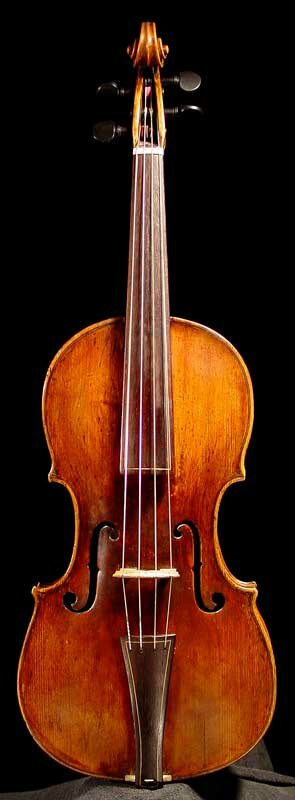 |
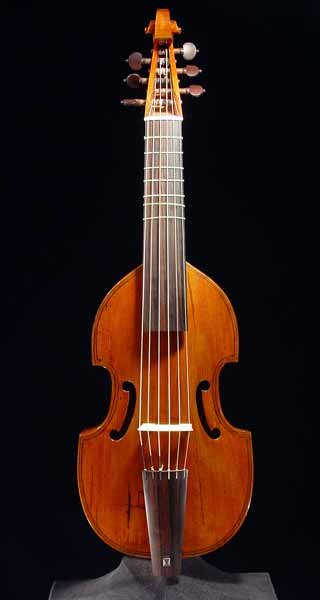 |
Table of Characteristics
|
Part
|
viola da braccio or violin
|
viola da gamba
|
|---|---|---|
| shoulder | square | square, sloping, festooned (leaf-form) |
| sound holes | f-form almost always | f-form, c-form, flame or snake form |
| rosette | almost never | very frequently, but not always |
| back | rounded | flat or rounded |
| corners | almost always | mostly without corners, some with corners |
| neck | relatively short | relatively long |
| frets* | almost never | always: 7 is the rule; sometimes 8 |
| tuning* | in fifths | in fourths, with a third in the middle |
| strings* | 4, more rarely 5 | 6 is the rule, sometimes 5 or 7 |
| stringing* | relatively strong (high tension) | relatively light (lower tension) |
| head | scroll, sometimes carved head | scroll (sometimes cut-through), carved head |
| edge | overhanging | overhanging or flush with ribs |
| Playing position* | violin/viola: on the shoulder | All sizes: between the legs |
| bow hold* | overhand (cello sometimes underhand) | always underhand, all sizes |
* Denotes the principal differences between the two families which
make a difference in the quality of sound and playing style
|
Da braccio:
In Italian, the term "braccio" means "arm", indicating that the instruments of this family were played on the arm, under the chin of the player. This, of course, is for the violin and the viola, because the violoncello is held between the legs and the double bass resting on the floor. Da gamba: In Italian, the term "gamba" means "leg". All of the members of the viola da gamba family (also named "viols" in English) are played between the legs, from the smallest, the pardessus, to the larger bass viol. However the violone in G and the contrabasso di viola da gamba are played standing, with the instrument on the ground. |
Michael Praetorius: Syntagma Musicum, 1619
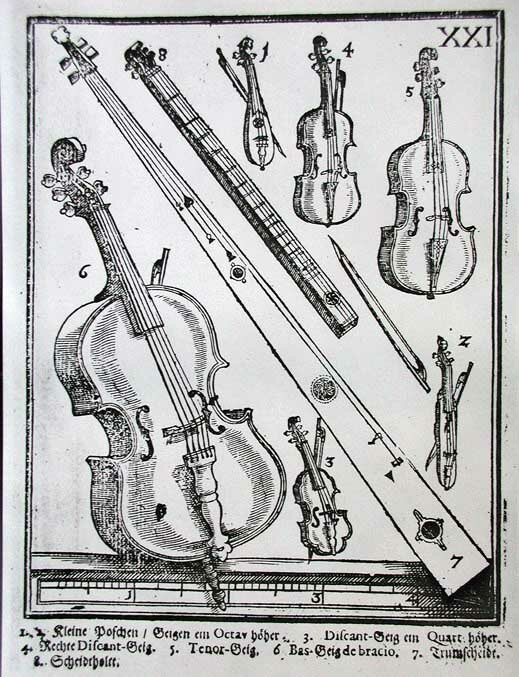 |
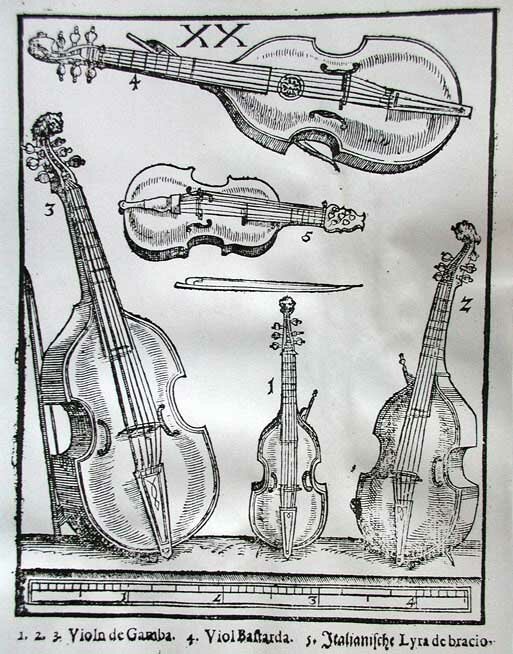 |
|
The Viola da braccio or Violin Family
|
The Viola da gamba or Viol Family
|
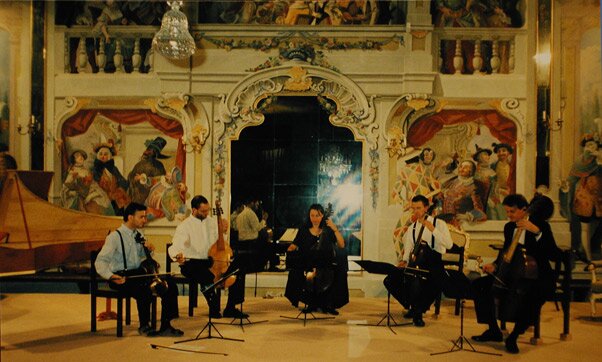
|
A consort of violas da gamba
In appropriately aristocratic setting The ensemble of violas da gamba, called a consort, consists of between two and eight viols of different sizes. Characteristically each instrument plays its own particular voice, which is independent from what the others play. From 1500 to 1680 the most renowned masters of the Renaissance and the Baroque brought forth a rich repertoire for the viol consort, treasured by players and audiences today. |
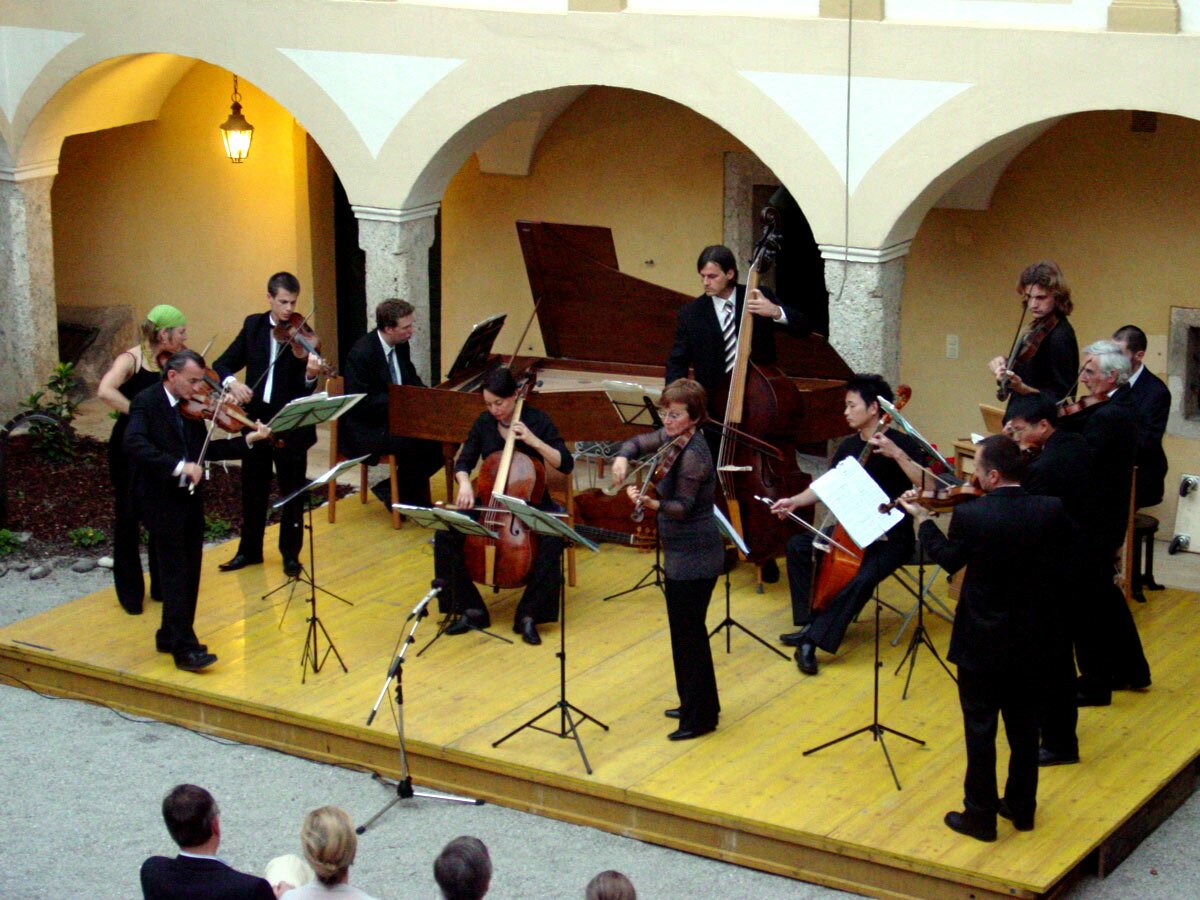
|
A string orchestra
A summer serenade in the courtyard of a Baroque chateau The violin family is often used in larger formations, where typically several violins play one and the same voice or part. However smaller ensembles of, say, three to six players are also common, in which each instrument would play an individual part. The most frequent of these, the string quartet, consists of two violins, one viola and one violoncello. Many notable composers, like Haydn, Mozart and Beethoven, wrote magnificent works for the string quartet. |
Present exhibition: Castello di Duino
Films, videos and recordings
The Different Forms of the Viola da gamba
The Viola da gamba in Italy
The Viola da gamba in England
The Viola da gamba in Austria
The Viola da gamba in Germany
The Viola da gamba in France
THE VIOLA DA GAMBA: RESOURCES INDEX
words of wisdom | shapes of viols
updated 21.06.2011